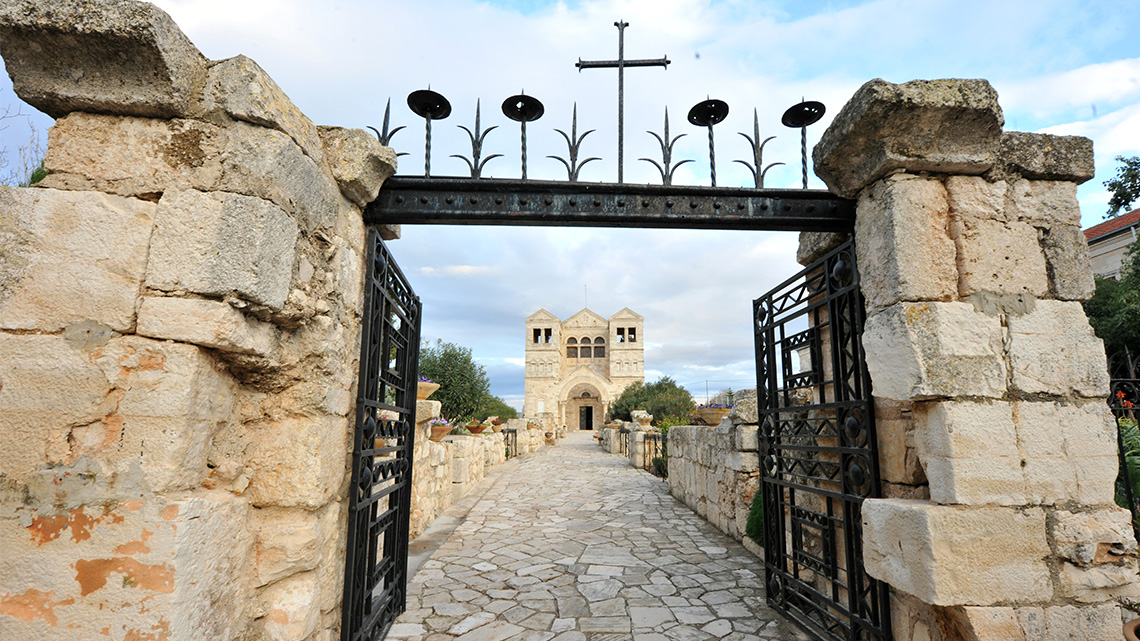Second Sunday of Lent reflection by Martin Foster Director, Liturgy Office, Catholic Bishops’ Conference of England and Wales.

One of great ecumenical achievements in the last 30 years has been a communion of the Word across the churches each Sunday. The majority of English-speaking non-Catholic denominations follow the Revised Common Lectionary for the Sunday readings. The RCL is based on the Roman Lectionary heard in Catholic parishes. This means on the majority of Sundays we are listening to the same Gospel and other readings.
The Second Sunday of Lent is the one significant exception. The RCL follows the Lutheran lectionary in placing the Transfiguration, which we hear today, on the last Sunday before Lent. Though the timing may be different the intention is similar to provide a contrast with the First Sunday of Lent when we hear of Jesus being tempted in the desert. In the Transfiguration of Jesus we get a glimpse of Christ in glory the fulfilment of the law and the prophets. It is a promise of what is to come; a vision to sustain us through Lent and on to Easter.
This year we listen to Mark’s account of the Transfiguration in Chapter 9. Mark’s is the shortest Gospel and can often be concise and even breathless as he moves from one scene to the next. But he also includes small details which the other synoptic Gospels (Matthew and Luke) do not not include. Though the structure of the story is common in all three Gospels, Mark tell us that Jesus’ clothes became ‘radiant, intensely white’ but adds this was ‘as no one on earth could bleach them’. Mark is perhaps trying to convey the extraordinary nature of the scene, that is outside normal experience, beyond what we might be able to imagine.
We then hear that Jesus is talking with Moses and Elijah. These two Old Testament figures represent the Law and the Prophets — which is one way Jewish people refer to the Hebrew scriptures. In Luke’s account it tells what they were speaking of — Jesus’ ‘departure, which he was about to accomplish at Jerusalem’. in Greek the word for ‘departure’ is ‘exodus’ — so Luke is making a link between the saving of the Israelites through the Passover and crossing of the red sea and our salvation in Jesus’ passion, death and resurrection.
Next the disciples respond by Peter saying that ‘it is good that we are here. Let us make three tents…’ This is another example of the small differences between the three gospel accounts which tell us something about how the evangelist saw Jesus. In each account Peter addresses Jesus differently. In Matthew, he says ‘Lord’ – the same word we use in the ‘Lord, have mercy’, in Luke it is ‘Master,’ whereas in Mark Peter sees Jesus as a teacher, ‘Rabbi’. This speech is followed by another one of Mark’s small details as he explains about Peter ‘For he did not know what to say, for they were terrified’. This provides a human touch as Peter blurts out what is on his mind.
Before the disciples can finish a cloud overshadows them and they hear a voice, ‘This is my beloved son; listen to him.’ And then it is over, ‘suddenly’ only Jesus is there. It makes one think of those moments which seem to last for ever but have only taken a few minutes – when time seems to be frozen.
The season of Lent is an invitation for us to find time to make a moment of reflection – to take time on the mountain top — but with our focus on Easter the journey to which Lent is heading.
Martin Foster
Director, Liturgy Office
Catholic Bishops’ Conference of England and Wales